Natural Gas Markets
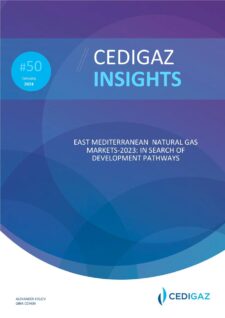
East Mediterranean Natural Gas Markets-2023: in Search of Development Pathways
January 2024 – 50 pages PDF format
| Non Member | 2000 € | |
| Member | FREE | Login |
Amidst the gas supply crisis aftermath in Europe and with global spot gas prices remaining in the double-digit range for the past years, the EastMed natural gas sector has been attracting growing attention from major producers, investors, and potential gas buyers. With vast reserves amounting to trillions of cubic meters, the EastMed countries hold the potential to bolster their own energy security and expand global gas export capabilities alleviating pressure in the tight gas market.
The latest CEDIGAZ report “East Mediterranean Natural Gas Markets-2023: in Search of Development Pathways” authored by Alexander Kislov and Gina Cohen, presents a thorough analysis of the development of the EastMed natural gas province, examining the most recent advancements in Egypt, Israel, Türkiye, Cyprus, Jordan, and Lebanon, and perspectives of new large-scale gas exports projects. While the future of the EastMed natural gas province is contingent on various factors, the detailed information and complete data presented in the report provide an opportunity to outline the potential outcomes and contours of the EastMed puzzle.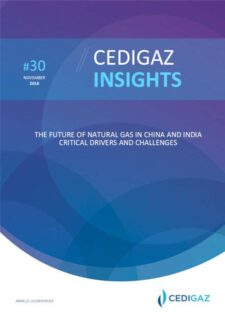
The Future of Natural Gas in China and India - Critical Drivers and Challenges
"Cedigaz Insights N° 30 November 2018 32 pages PDF format"
Accelerated reforms and focused policies aimed at increasing the role of gas and renewables in the energy mix combine to improve the natural gas demand outlook of China and India
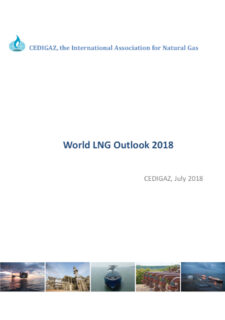
Medium and Long Term LNG Outlook 2018
Outlook - June 2018 - PDF, XLS format
CEDIGAZ 2018 LNG scenario to 2040
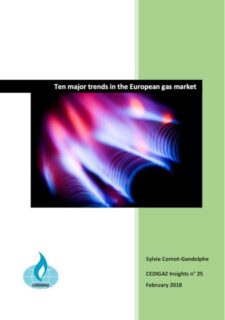
Ten major trends in the European gas market
Cedigaz Insights N° 25 February 2018 46 pages PDF format
The EU gas and energy sector is in the midst of a profound transformation driven by decarbonisation, digitalisation and decentralisation. The latest report by Cedigaz analyses in ten key points the evolution of the gas sector and includes forward looking views on new trends in EU gas markets.
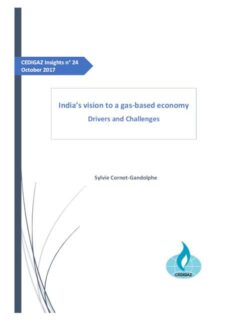
India's vision to a gas-based economy, drivers and challenges
Cedigaz Insights N° 24 October 2017 16 pages PDF format
Thanks to India's rising economy and population, the country's outlook for growth in energy demand is robust. The role of gas in the country's energy mix, however, is hard to determine. Today, India's primary energy mix is dominated by coal and oil. The role of natural gas is limited: only 6% in 2016. But the government wants to make India a gas-based economy and raise the share of natural gas in the energy mix to 15% by 2022, although the timing remains uncertain. This paper analyses gas demand trends in India by 2025-30 and draws on two reports recently published by the Oxford Institute for Energy Studies (OIES) and the Bureau of Economic Geology (BEG)/Centre for Energy Economics (CEE), University of Texas. Gas consumption in India is driven by five sectors: fertilizer (34% of total gas demand in fiscal year 2015-16), electric power (23%), refining (11%), city gas distribution, including transport (11%), and petrochemical (8%) industries. In 2016, after five years of consecutive declines, gas consumption increased to 55 bcm, boosted by sales to city gas distribution mainly. The country faces a widening gap between indigenous gas production and demand, which is met by increasing Liquefied Natural Gas (LNG) imports. LNG imports surged by 34% over 2015 to 25 bcm in 2016, making India the fourth largest importer in the world.
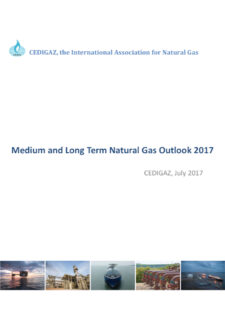
Medium and Long Term Natural Gas Outlook 2017
Outlook - July 2017 - PDF, XLS format
CEDIGAZ 2017 perspectives on gas markets to 2035
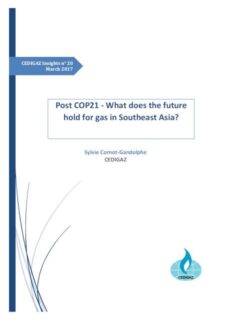
Post COP21 - What does the future hold for gas in Southeast Asia?
Cedigaz Insights N° 20 March 2017 37 pages PDF format
Controlling greenhouse gas (GHG) emissions and other environmental impacts while ensuring safe and affordable energy for all are the major challenges faced by Southeast Asia. To respond to these challenges, the Association of Southeast Asian Nations (ASEAN) is increasing the share of renewable energy sources in its energy mix and implements measures to reduce its energy and carbon intensity. Surging energy and electricity needs mean that fossil fuels will continue to dominate the energy and electricity mix by 2040. While natural gas is an ideal fuel to reduce the environmental footprint of power generation, competition with coal, stagnation in gas production, lack of adequate infrastructure, have been major barriers to its increased use so far. Southeast Asia has turned to coal instead, which has been the fuel of choice for power generation in the past ten years due to its low cost and ample availability in the region. But as electricity demand is expected to continue surging, and with a growing concern over air pollution and CO2 emissions, the dominance of coal in the Southeast Asian power sector is increasingly called into question.
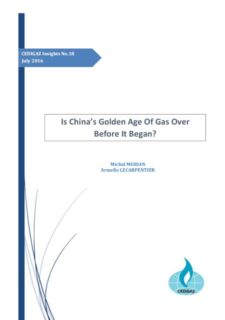
Is China's Golden Agen Of Gas Over Before It Began?
Cedigaz Insights N° 18 July 2016 18 pages PDF format
Up until not long ago, China’s gas story had been one of soaring demand and insufficient supplies. But since 2014, due to its economic slowdown and the collapse in oil prices, China’s gas market has swung into oversupply. Despite Beijing’s ambitious fuel switching agenda from coal to gas, domestic prices will continue to cripple demand and the government’s consumption targets of 230-260 bcm in 2015 and 360-400 bcm in 2020 will not be met. The author expects China’s gas demand to reach 190 bcm in 2015 and 270-280 bcm in 2020.
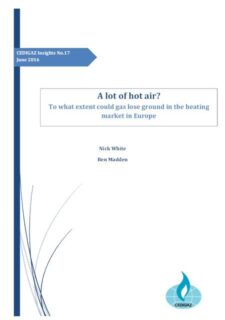
A lot of hot air? To what extent could gas lose ground in the heating market in Europe
Cedigaz Insights N° 17 June 2016 58 pages PDF format
According to the latest CEDIGAZ report, the gas for heating market in Europe, for many years a stable and growing demand source, is on the cusp of significant change, which is likely to lead to major declines over the coming decades. Key uncertainties remain over the pace and extent of these declines, and gas utilities would be well advised to prepare for changes by involvement in district heating and other technologies which maintain gas as part of a lower carbon heating future. Natural gas is the dominant fuel for heating residential and commercial properties in the EU, providing 47% of both input energy and useful heat in 2013. However, gas for heating faces major challenges in coming decades due to calls for greater energy efficiency and decarbonisation of the heating sector. Although, in the mid-term , expansion of CHPs and DHNs provide some opportunities for gas, long-term forecasts show gas demand for heating declining over the period to 2050, but there are significant variations in the future levels from a business as usual scenario which sees gas demand at 165 bcm in 2050 (compared to 195 bcm in 2013) to a high energy efficiency scenario which at only 44 bcm.
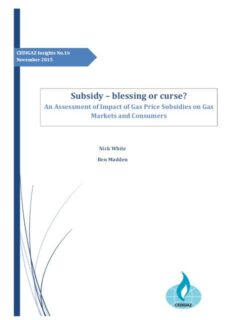
Subsidy – blessing or curse? An Assessment of Impact of Gas Price Subsidies on Gas Markets and Consumers
Cedigaz Insights N° 16 November 2015 63 pages PDF format
Gas price subsidies have a significant effect on the gas consumption. Simply put they embody the inexorable link between the price of a good and its demand. By artificially lowering the price of gas, it can become more competitive as a fuel, potentially even crowding out other fuels or technologies, as well as encouraging excessive consumption that would not have occurred in the absence of subsidies. The extent to which either of these situations are the case is dependent on the subsidies of a given country with two particular factors; price/level of discount and how much of the population it is available to. The cheaper the gas the more widespread and heavy its use (or the use of a byproduct of gas such as electricity, heat or water) will be. Additionally if subsidies are extended to larger parts of the population then not only does that increase the amount of users whose consumption may be wasteful but it also extends cheaper gas to richer households who are typically higher consumption users and therefore capable of wasting more. It therefore follows that any countries wishing to reduce or cut their subsidies will likely see their gas demand fall.
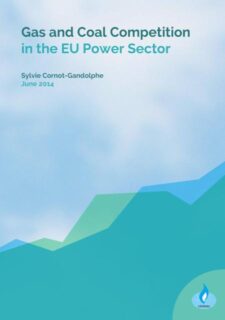
Gas and Coal Competition in the EU Power Sector
Thematic studies June 2014 213 pages PDF format
Despite its many assets, a confluence of factors – including flat electricity demand, rising use of renewable energy sources, falling wholesale electricity market prices, high gas prices relative to coal and low CO2 prices – has eroded the competitiveness of natural gas in the EU power sector. The share of natural gas in the EU electricity mix has decreased from 23% in 2010 to 20.5% in 2012. By contrast, coal-fired power stations have been operating at high loads, increasing coal demand by the sector. This thorough analysis by CEDIGAZ of gas, coal and CO2 dynamics in the context of rising renewables is indispensable to understand what is at stake in the EU power sector and how it will affect future European gas demand.



